Knud Rasmussen Glacier Status Analysis Based on Historical Data and Moving Detection Using RPAS
Abstract
1. Introduction
2. Project Aims
2.1. Measuring the Glacier Flow Speed
2.2. Detection of Long-Term Changes in the Extent of the Glacier
3. Study Area
4. Used Instruments
5. Data Capturing
5.1. RPAS Data Capturing
5.2. Historical Image Data
6. Data Processing
6.1. RPAS Data Processing
6.1.1. Creating of Point Clouds
6.1.2. Joining of Both Point Clouds
6.1.3. Analyzing the Glacier Flow Speed
6.2. Processing of Historical Image Data
6.2.1. Historical Aerial Images from the 1930s
6.2.2. Archive Landsat Satellite Data
6.2.3. Archive Sentinel Satellite Data
6.3. The Knud Rasmussen Glacier Time Changes
7. Discussion and Conclusions
Author Contributions
Funding
Institutional Review Board Statement
Informed Consent Statement
Data Availability Statement
Acknowledgments
Conflicts of Interest
References
- Greenland Rapidly Rising as Ice Melt Continues. 2020. Available online: http://www.miami.edu/index.php/news/releases/greenland_rapidly_rising_as_ice_melt_continues/ (accessed on 5 October 2020).
- Encyclopædia Britannica. 1999 Multimedia Edition. Available online: https://www.britannica.com/place/Greenland (accessed on 28 October 2020).
- Stocker, T.F.; Qin, D.; Plattner, G.K.; Tignor, M.; Allen, S.K.; Boschung, J.; Nauels, A.; Xia, Y.; Bex, V.; Midgley, P.M.; et al. Climate Change 2013—The Physical Science Basis: Working Group I Contribution to the Fifth Assessment Report of the Intergovernmental Panel on Climate Change; Cambridge University Press: Cambridge, UK, 2014. [Google Scholar] [CrossRef]
- Slater, T.; Hogg, A.E.; Mottram, R. Ice-sheet losses track high-end sea-level rise projections. Nat. Clim. Chang. 2020, 10, 879–881. [Google Scholar] [CrossRef]
- Mouginot, J.; Rignot, E.; Bjørk, A.A.; Van den Broeke, M.; Millan, R.; Morlighem, M.; Noël, B.; Scheuchl, B.; Wood, M. Forty-six years of Greenland Ice Sheet mass balance from 1972 to 2018. Proc. Natl. Acad. Sci. USA 2019, 116, 9239–9244. [Google Scholar] [CrossRef]
- Sasgen, I.; Wouters, B.; Gardner, A.S.; King, M.D.; Tedesco, M.; Landerer, F.W.; Dahle, C.; Save, H.; Fettweis, X. Return to rapid ice loss in Greenland and record loss in 2019 detected by the GRACE-FO satellites. Commun. Earth Environ. 2020, 1, 1–8. [Google Scholar] [CrossRef]
- Bjørk, A.A.; Kjær, K.H.; Larsen, N.K.; Kjeldsen, K.K.; Khan, S.A.; Funder, S.V.; Korsgaard, N.J. The Greenland Ice Sheet—80 Years of Climate Change Seen from the Air; Natural History Museum of Denmark, Faculty of Science, University of Copenhagen: Copenhagen, Denmark, 2014; 180p, ISBN 978-87-87519-46-5. [Google Scholar]
- Bjørk, A.A.; Kjær, K.H.; Korsgaard, N.J.; Khan, S.A.; Kjeldsen, K.K.; Andresen, C.S.; Box, J.E.; Larsen, N.K.; Funder, S. An aerial view of 80 years of climate-related glacier fluctuations in southeast Greenland. Nat. Geosci. 2012, 5, 427–432. [Google Scholar] [CrossRef]
- Näcke, L. Vergleich Kinematischer GNSS-Daten aus Ostgrönland (Comparison of Kinematic GNSS Data from East Greenland). Bachelor’s Thesis, Brandenburgische Technische Universität Cottbus-Senftenberg, Cottbus, Germany, 2020. [Google Scholar]
- Pavelka, K.; Šedina, J.; Matoušková, E.; Hlaváčová, I.; Korth, W. Examples of different techniques for glaciers motion monitoring using InSAR and RPAS. Eur. J. Remote Sens. 2019, 52, 219–232. [Google Scholar] [CrossRef]
- Bash, E.A.; Moorman, B.J.; Gunther, A. Detecting Short-Term Surface Melt on an Arctic Glacier Using UAV Surveys. Remote Sens. 2018, 10, 1547. [Google Scholar] [CrossRef]
- Zwally, J.; Abdalati, W.; Herring, T.; Larson, K.; Saba, J.; Steffen, K. Surface Melt-Induced Acceleration of Greenland Ice-Sheet Flow. Science 2002, 297, 218–222. [Google Scholar] [CrossRef] [PubMed]
- Šedina, J.; Housarová, E.; Raeva, P. Using RPAS for the detection of archaeological objects using multispectral and thermal imaging. Eur. J. Remote Sens. 2019, 52 (Suppl. 1), 182–191. [Google Scholar] [CrossRef]
- Korth, W.; Hoffman, U.; Hitziger, T.; Küchenmeister, T.; Pawelka, K. Klimabedingte Veränderungen des Inlandeises im südlichen Grönland. In 19. Internationale Geodätische Woche Obergurgl 2017; Herbert Wichmann Verlag: Berlin, Germany, 2017; ISBN 978-3-87907-624-6. [Google Scholar]
- Štroner, M.; Pavelka, K. Linear spatial transformation. Geodetický a Kartografický Obzor 2001, 47, 233–235. [Google Scholar]
- M3C2 (Plugin). CloudCompare. Available online: https://www.cloudcompare.org/doc/wiki/index.php?title=M3C2 (accessed on 10 October 2020).
- Lague, D.; Brodu, N.; Leroux, J. Accurate 3D comparison of complex topography with terrestrial laser scanner: Application to the Rangitikei canyon (N-Z). ISPRS J. Photogramm. Remote Sens. 2013, 82, 10–26. [Google Scholar] [CrossRef]
- Barnhart, T.B.; Crosby, B.T. Comparing Two Methods of Surface Change Detection on an Evolving Thermokarst Using High-Temporal-Frequency Terrestrial Laser Scanning, Selawik River, Alaska. Remote Sens. 2013, 5, 2813–2837. [Google Scholar] [CrossRef]
- DiFrancesco, P.-M.; Bonneau, D.; Hutchinson, D.J. The Implications of M3C2 Projection Diameter on 3D Semi-Automated Rockfall Extraction from Sequential Terrestrial Laser Scanning Point Clouds. Remote Sens. 2020, 12, 1885. [Google Scholar] [CrossRef]
- Gervaix, F. UAV Mapping of a Greenland Glacier. GIM J. 2018. Available online: https://www.gim-international.com/content/article/uav-mapping-of-a-greenland-glacier (accessed on 28 October 2020).
- Simonsen, S.B.; Sørensen, L.S. Implications of changing scattering properties on Greenland ice sheet volume change from Cryosat-2 altimetry. Remote Sens. Environ. 2017, 190, 207–216. [Google Scholar] [CrossRef]
- Sandberg Sørensen, L.; Simonsen, S.B.; Forsberg, R.; Khvorostovsky, K.; Meister, R.; Engdahl, M.E. 25 years of elevation changes of the Greenland Ice Sheet from ERS, Envisat, and CryoSat-2 radar altimetry. Earth Planet. Sci. Lett. 2018, 495, 234–241. [Google Scholar] [CrossRef]
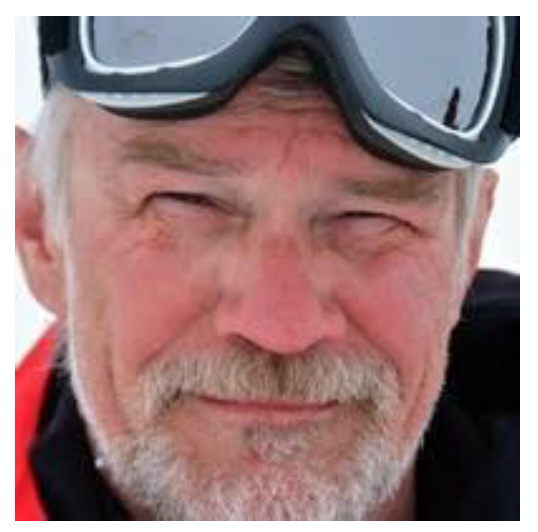
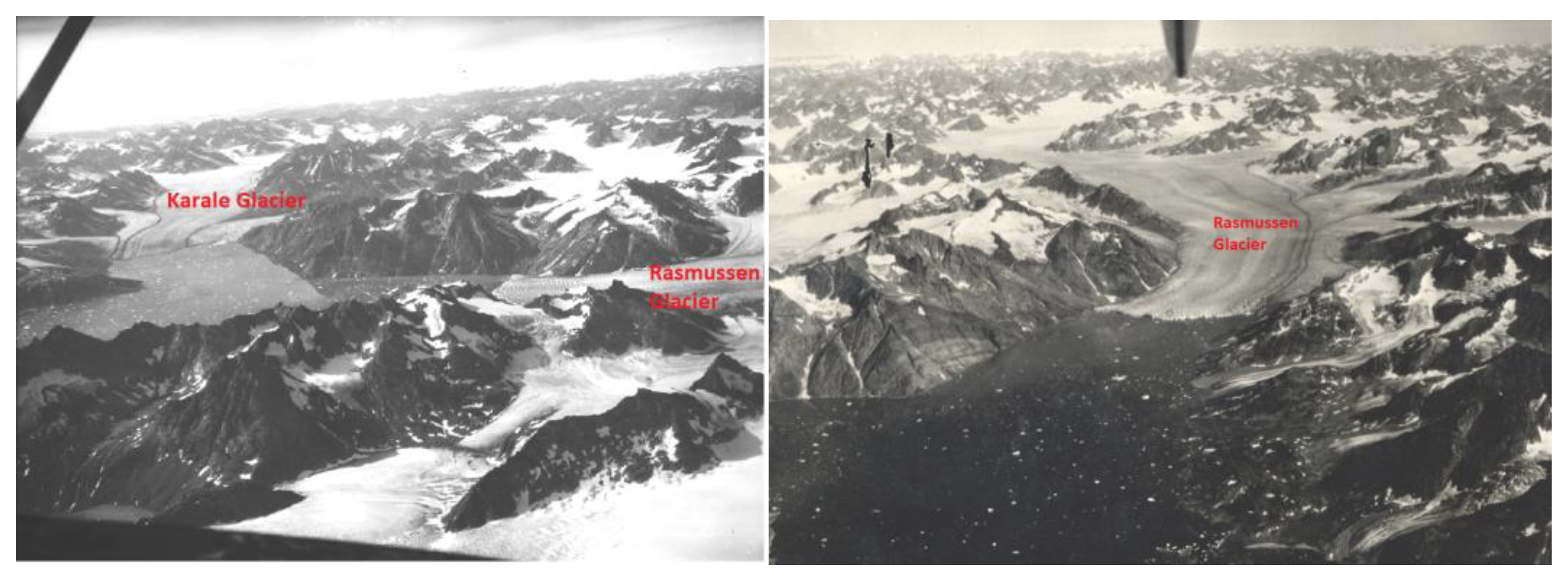
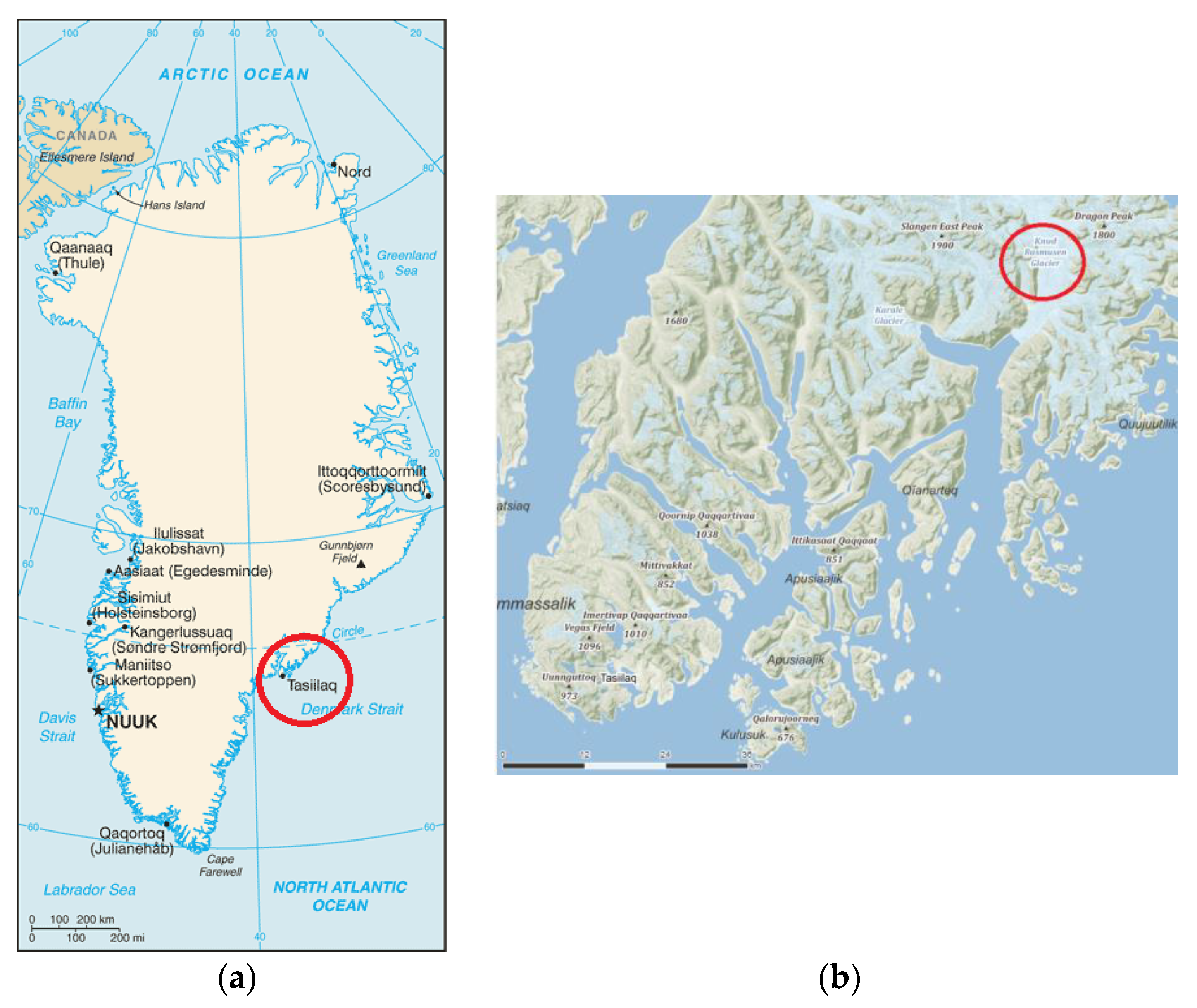
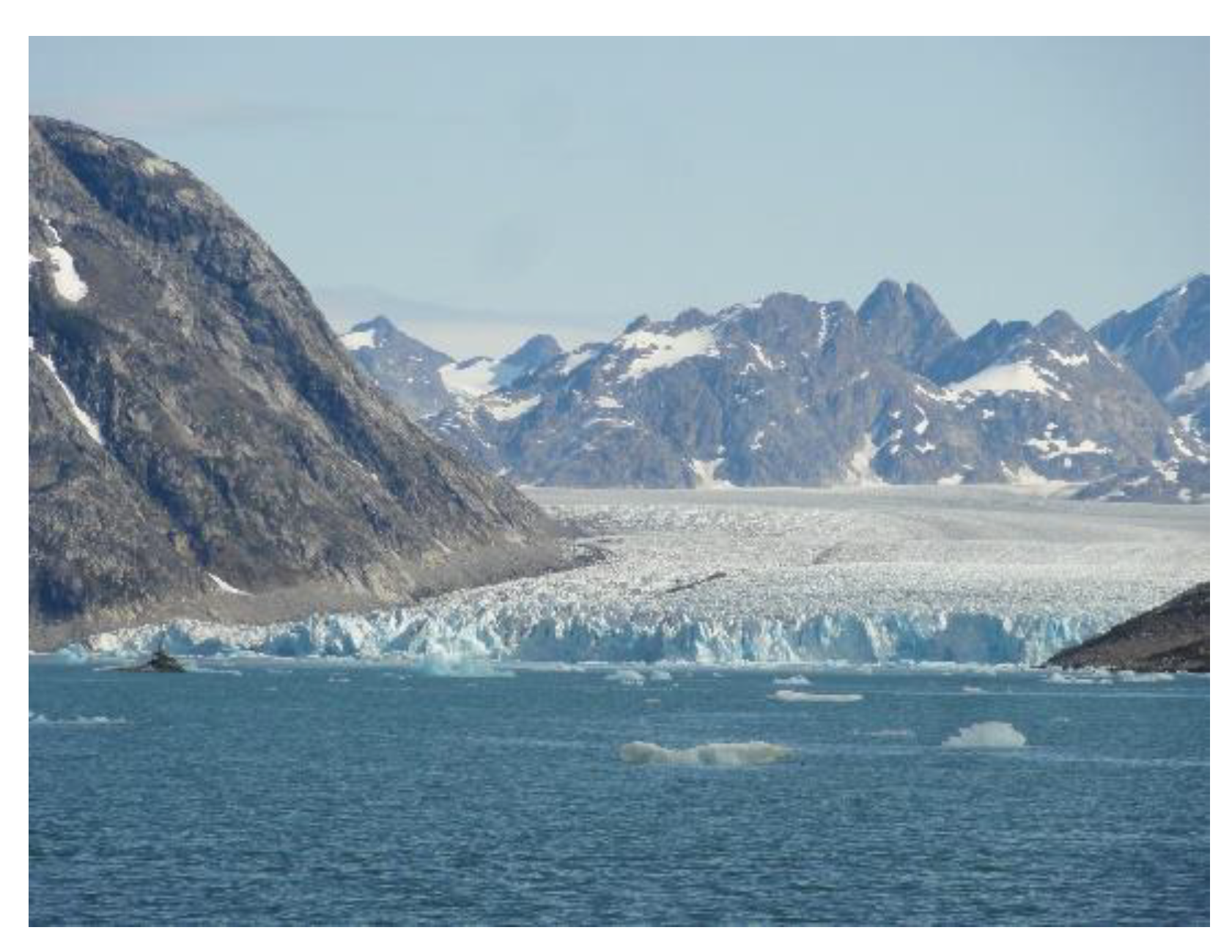
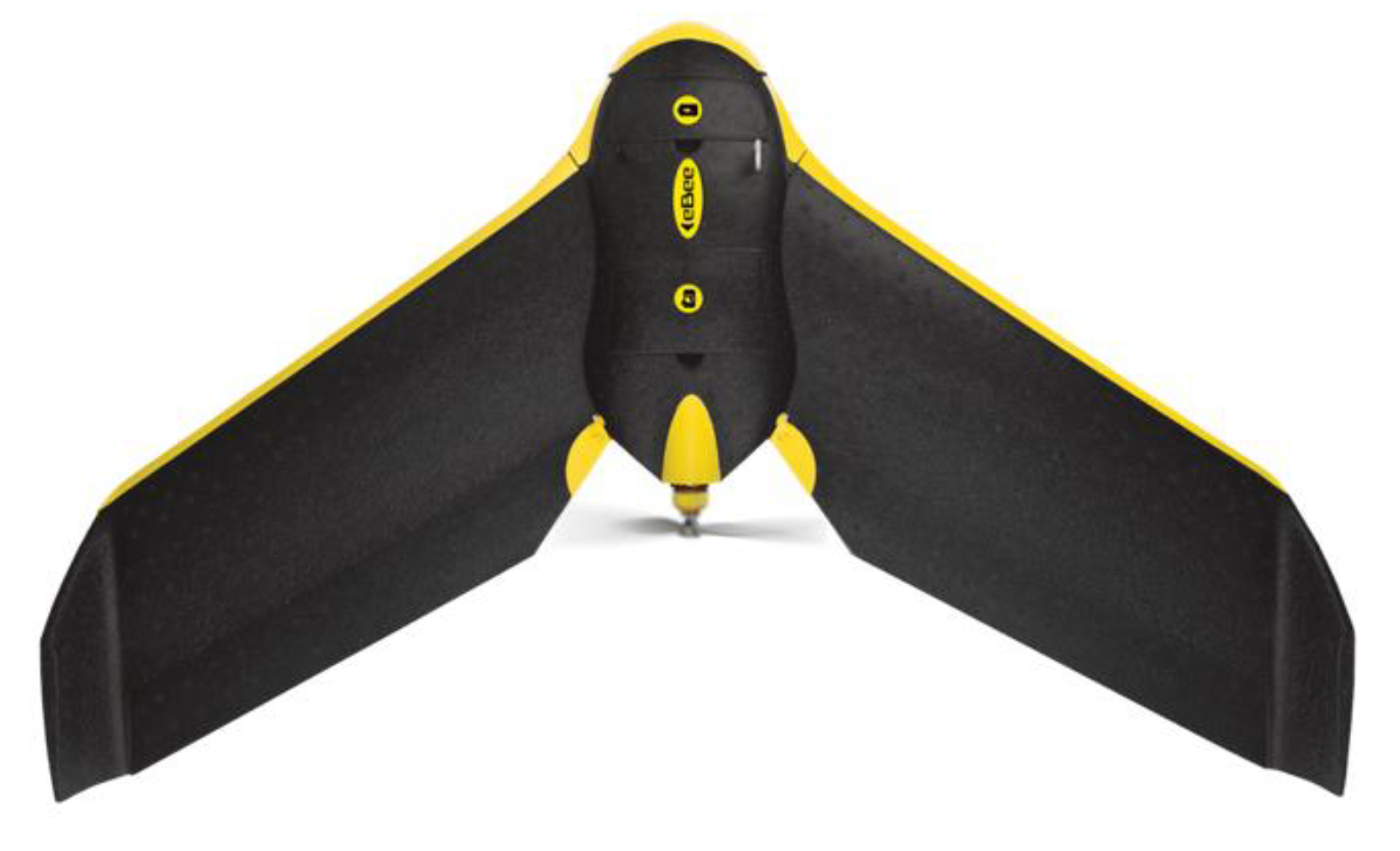
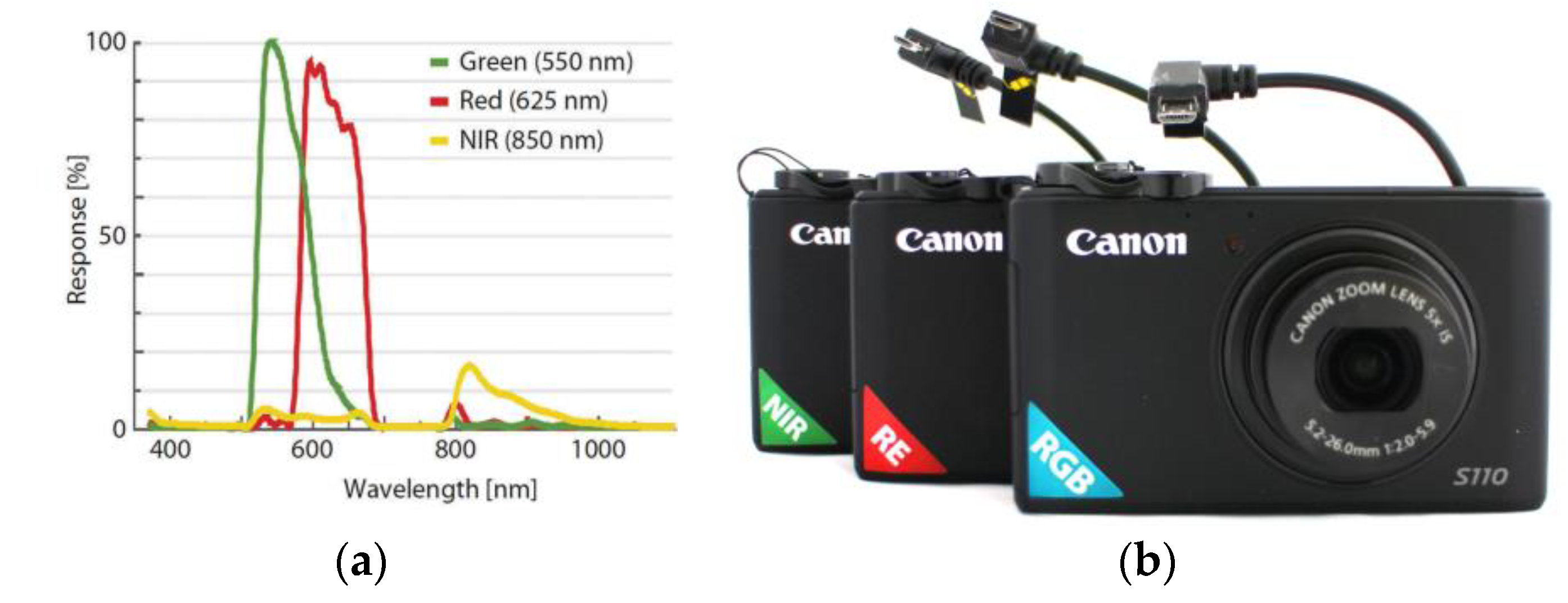
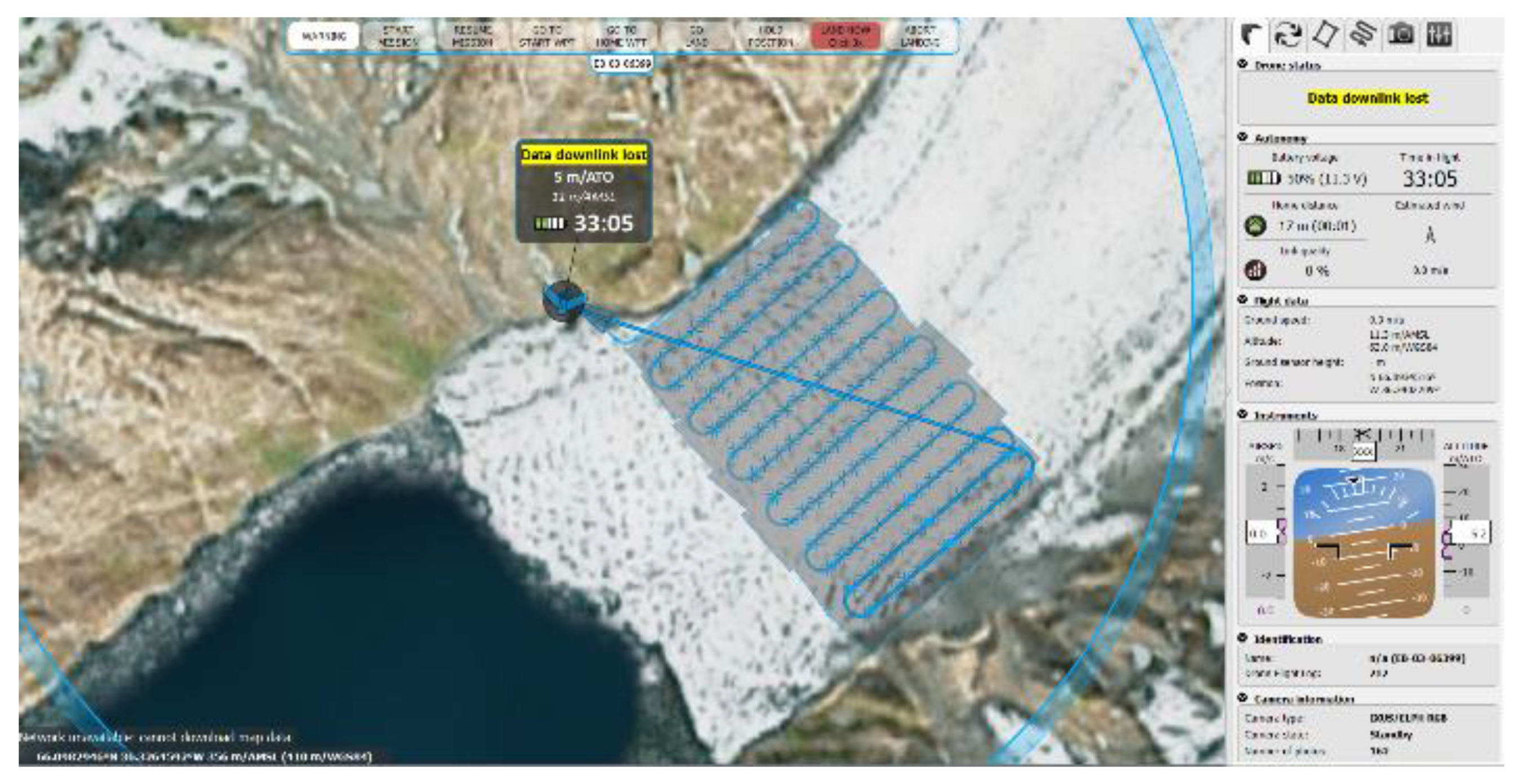
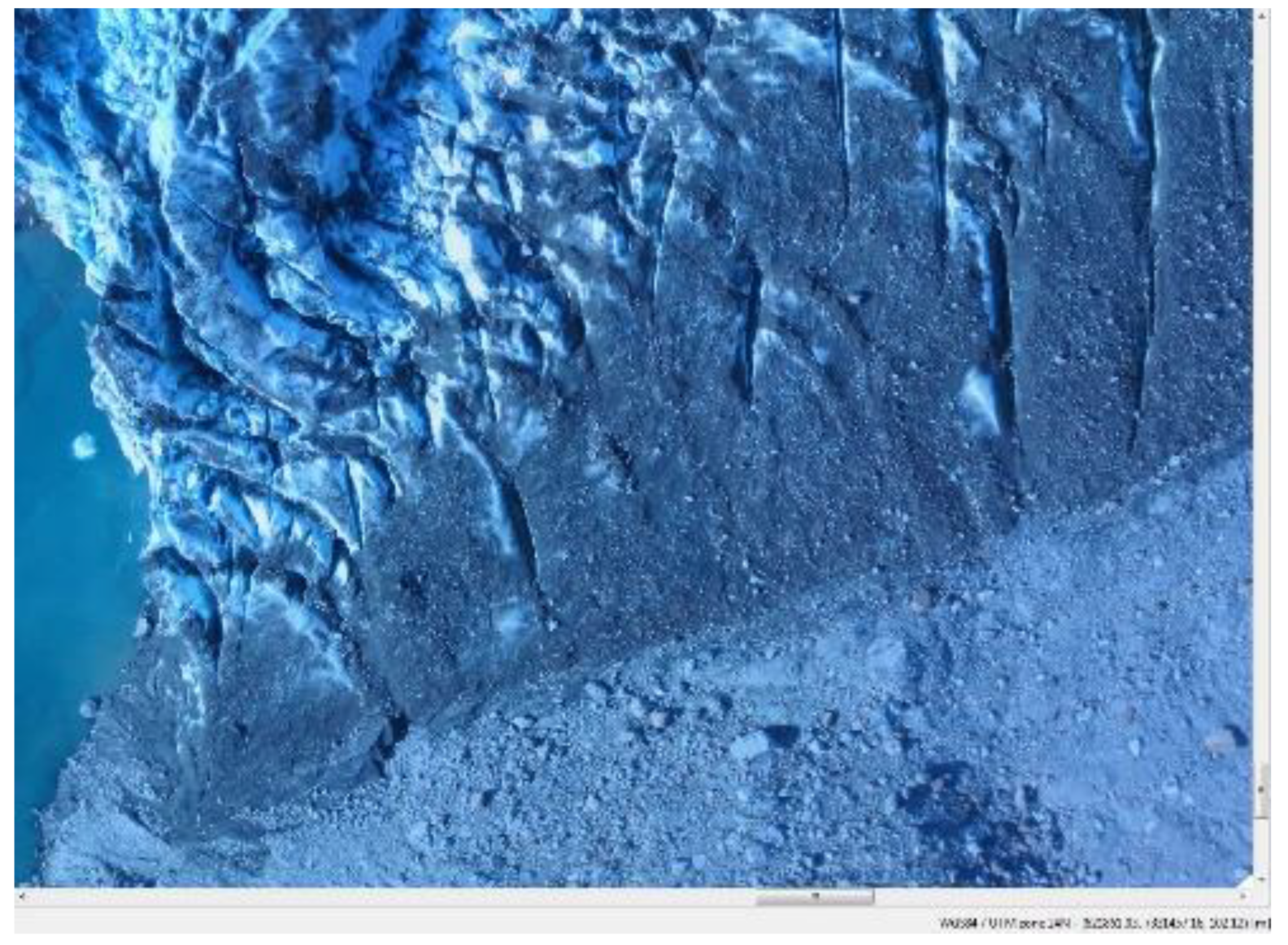
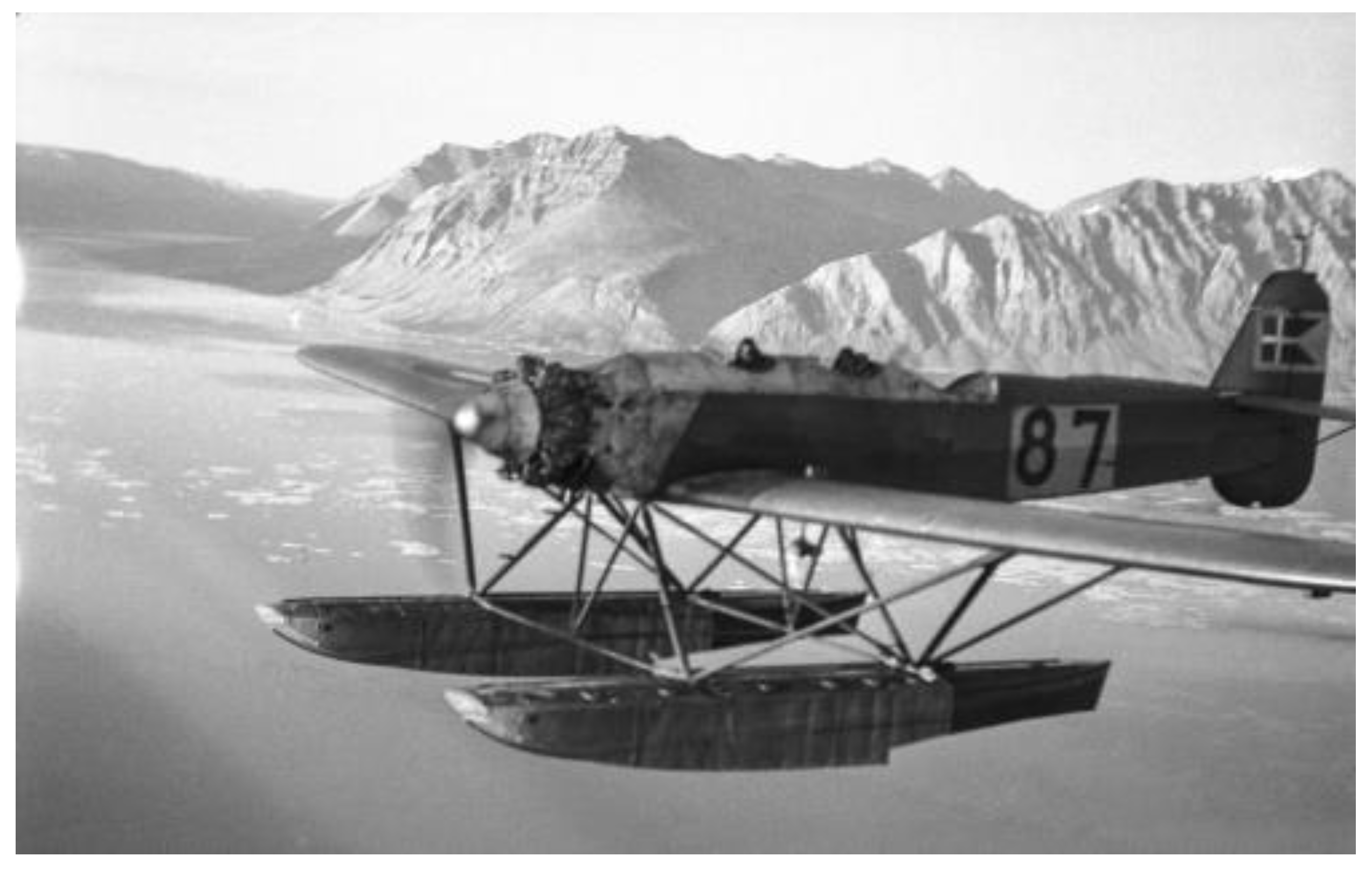
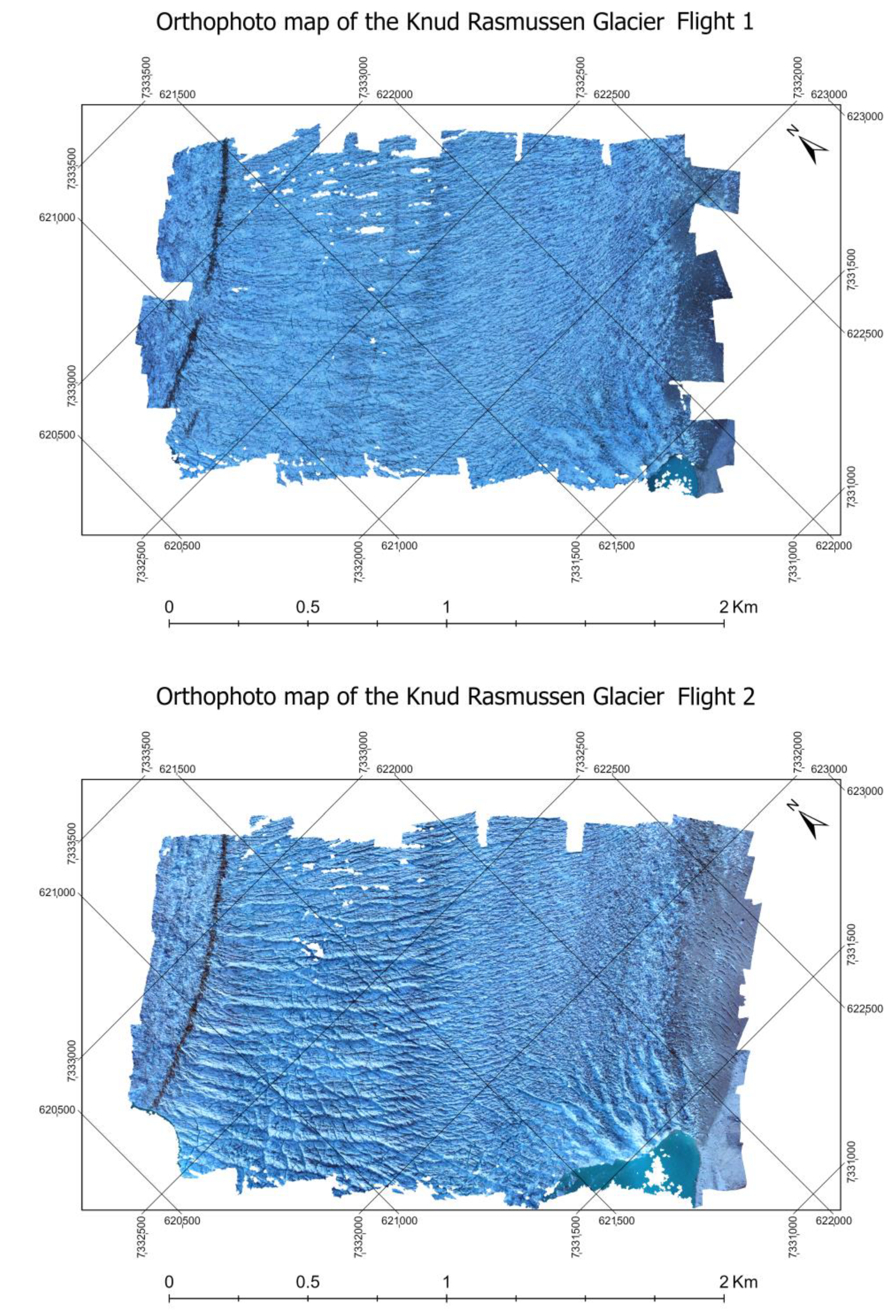

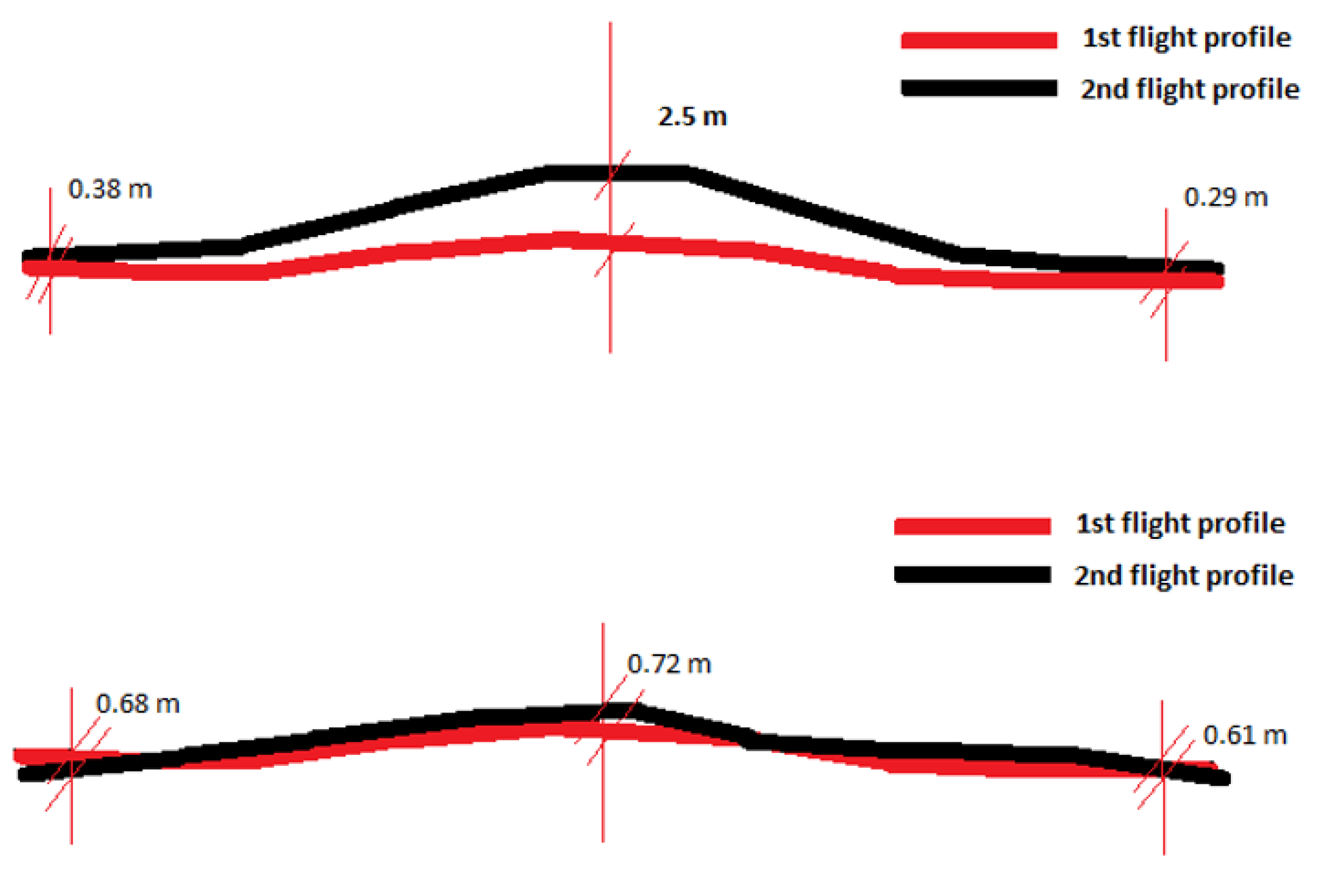
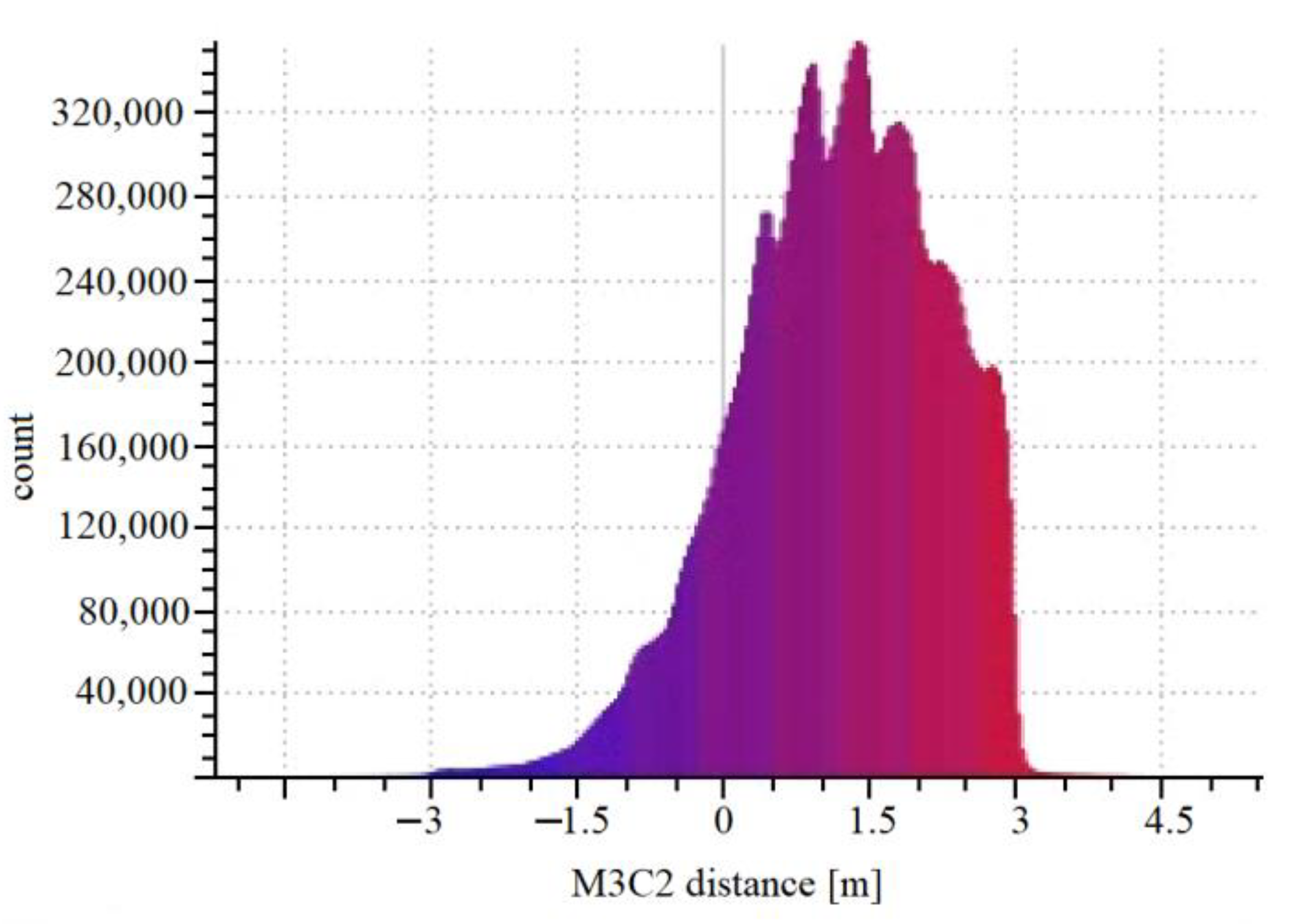
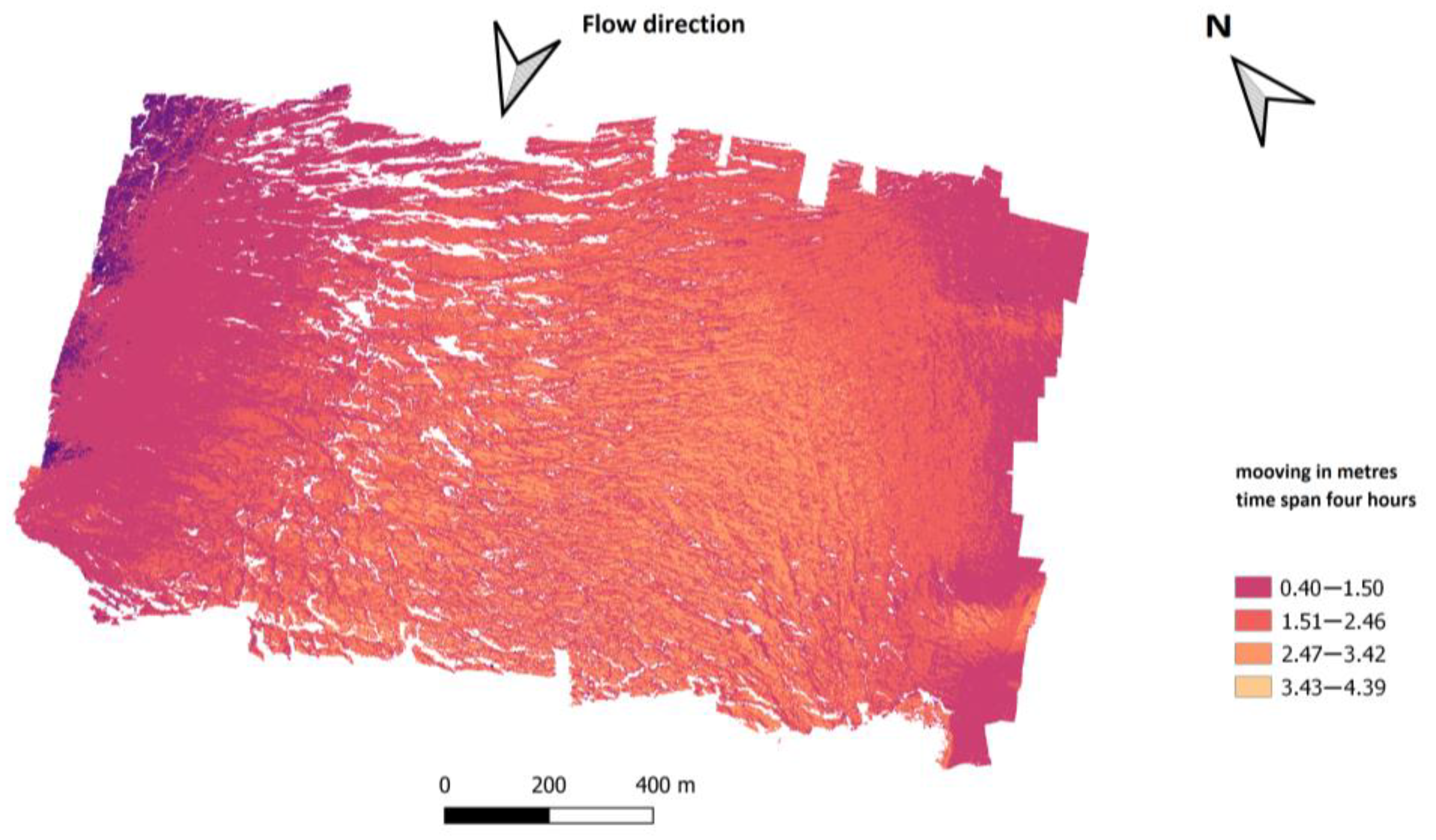
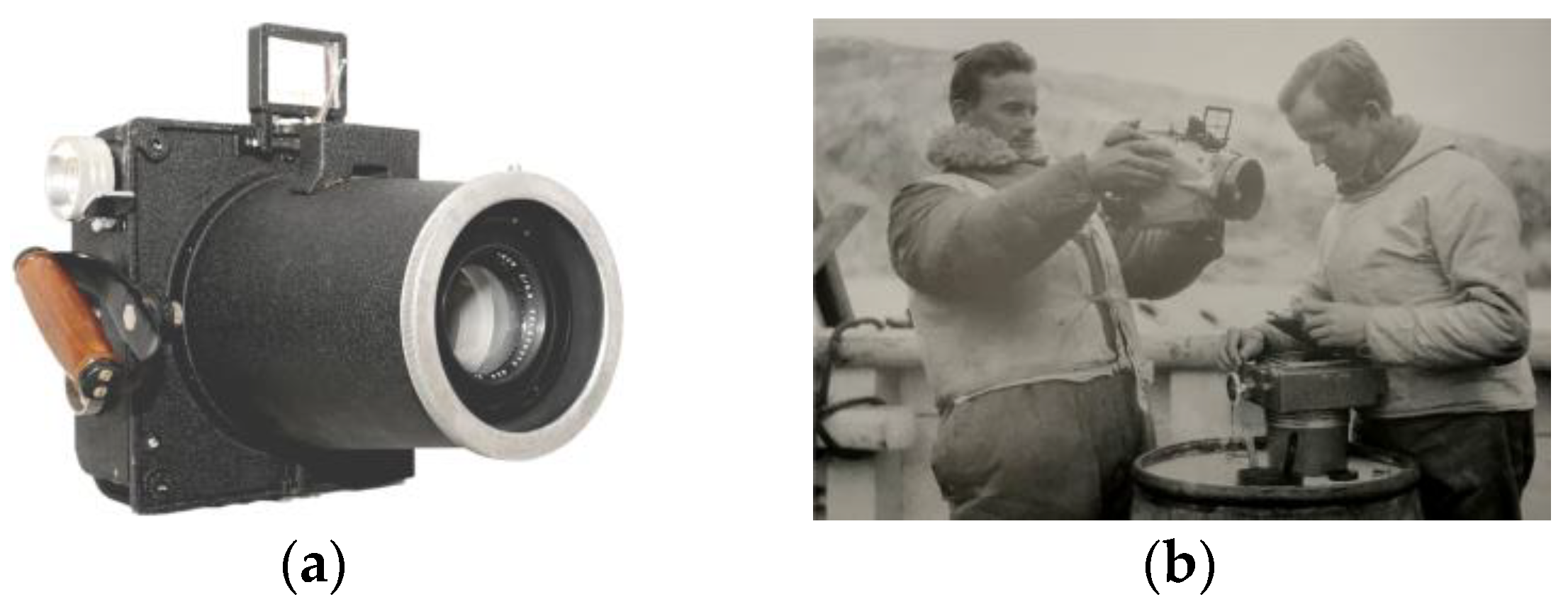
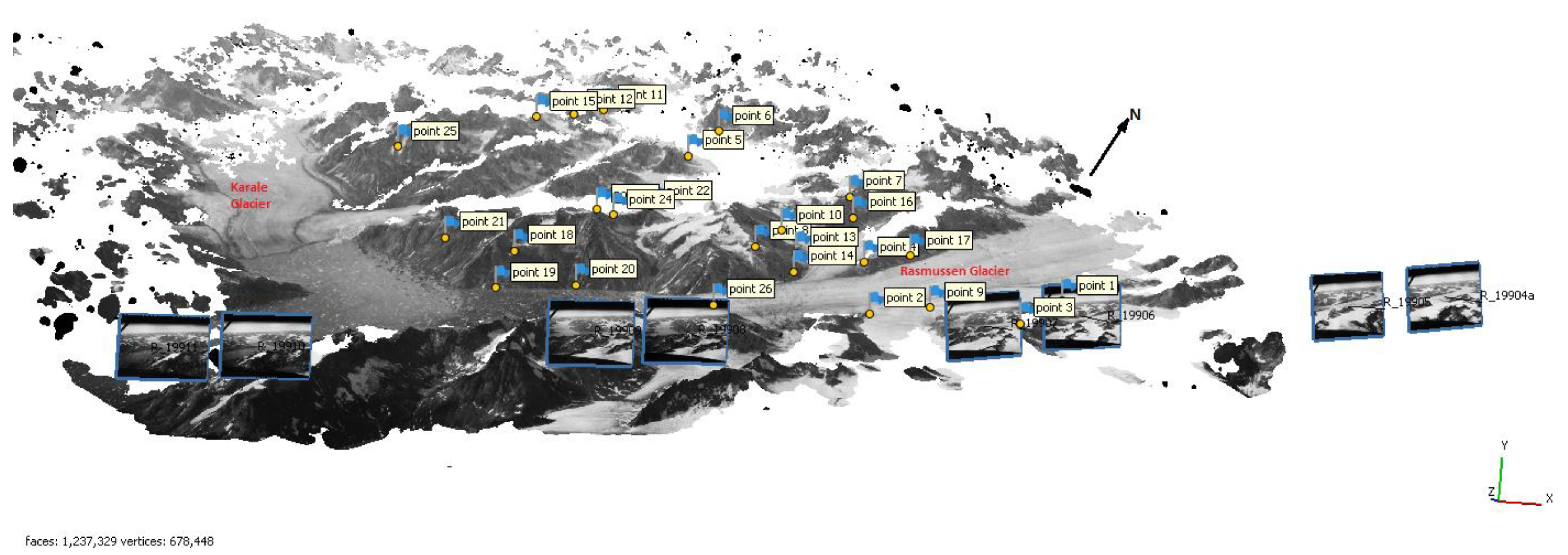
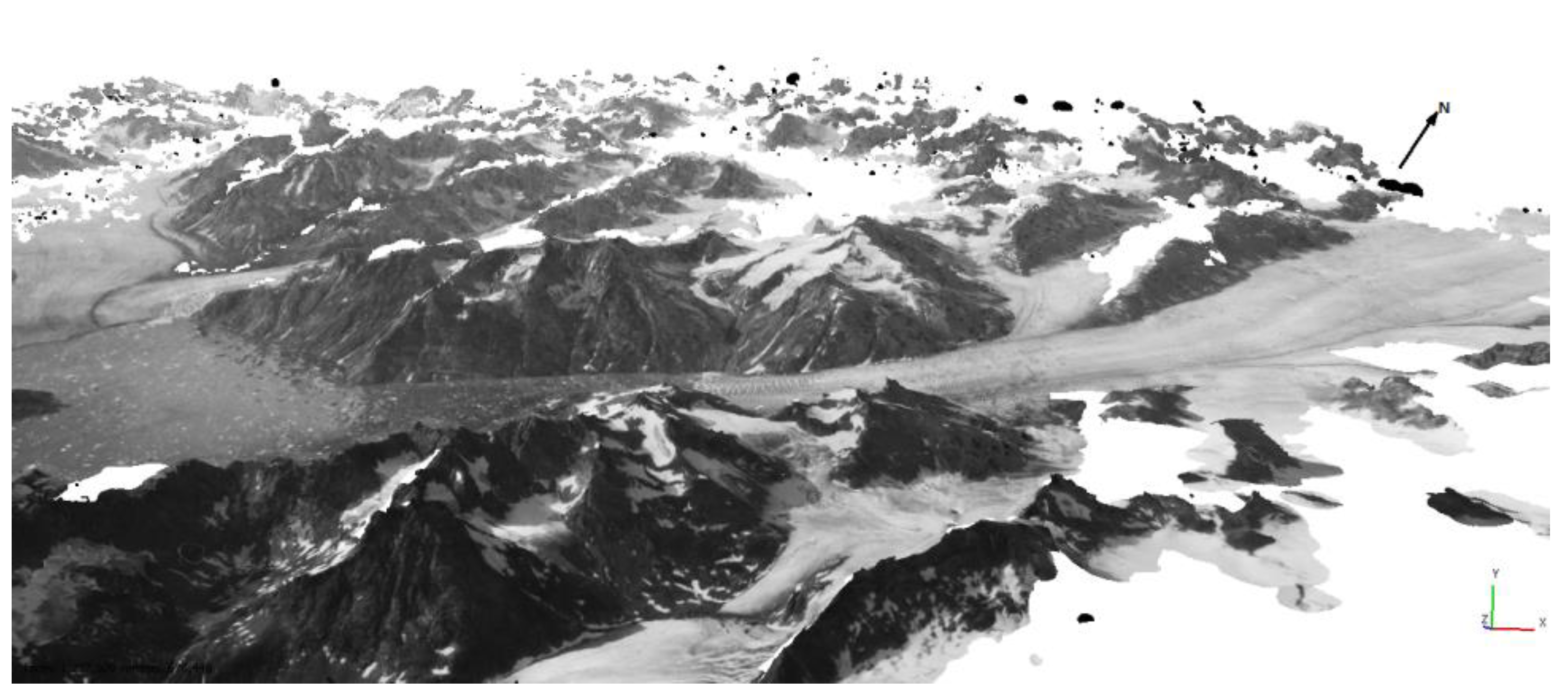
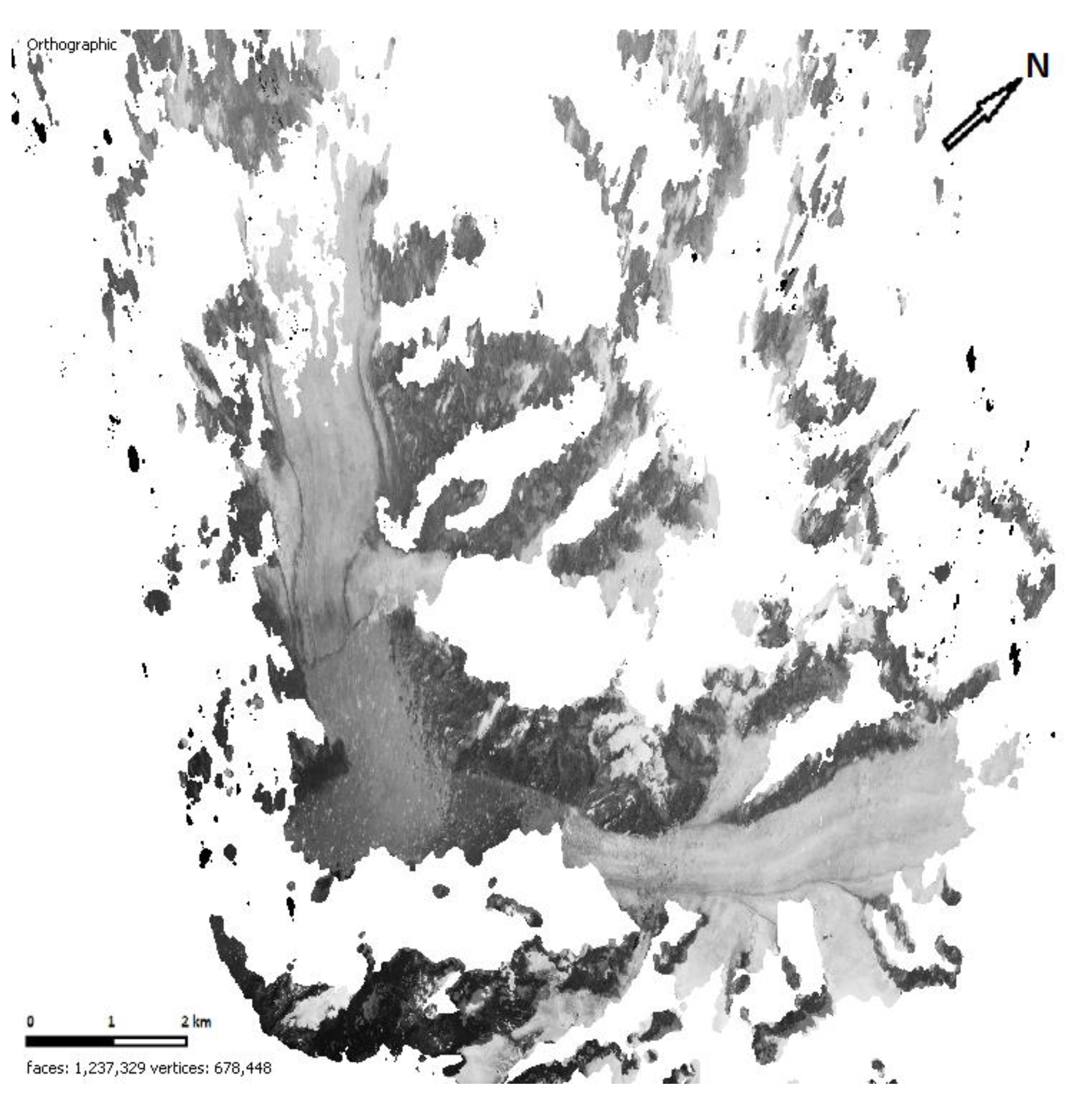
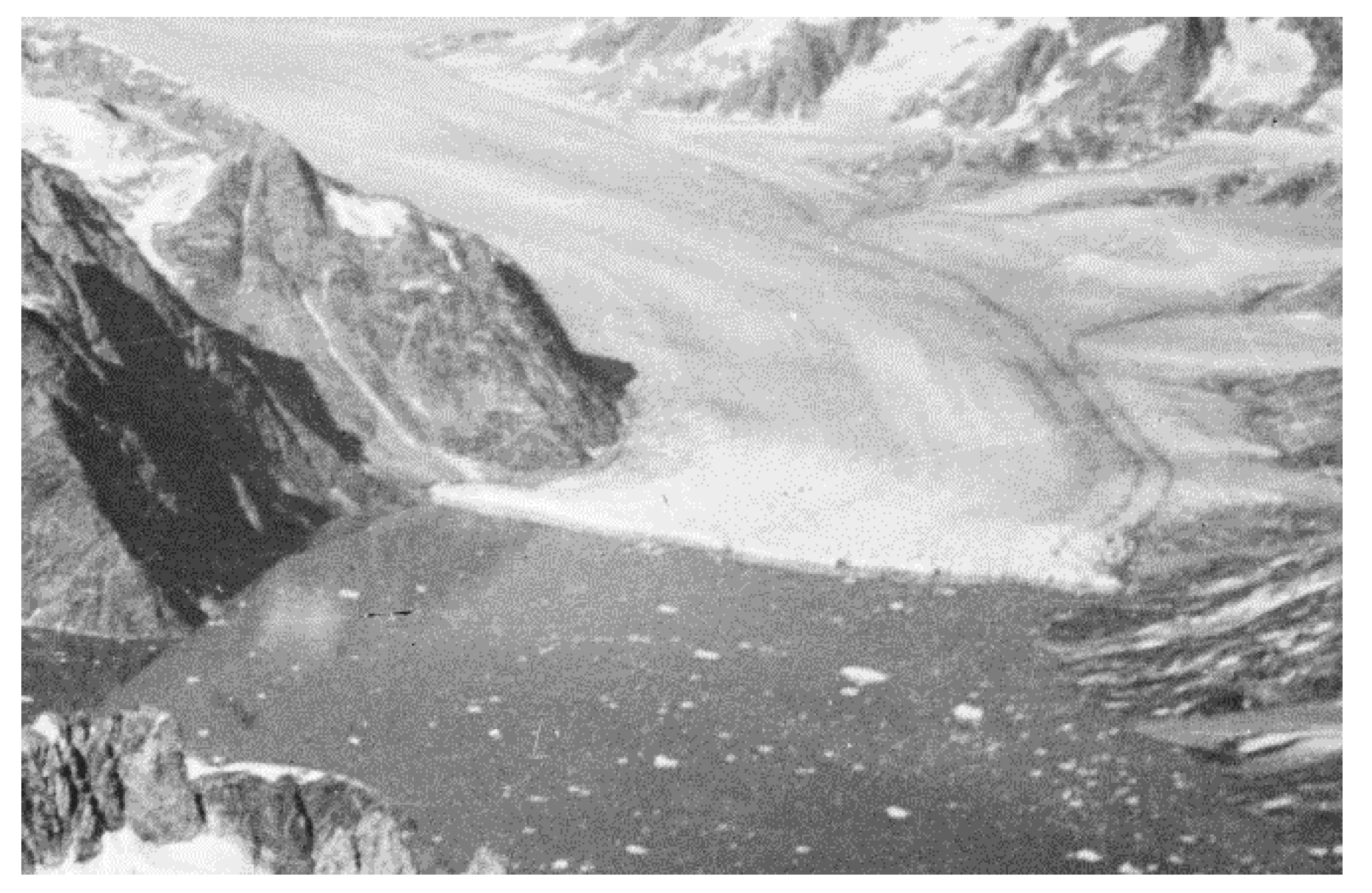
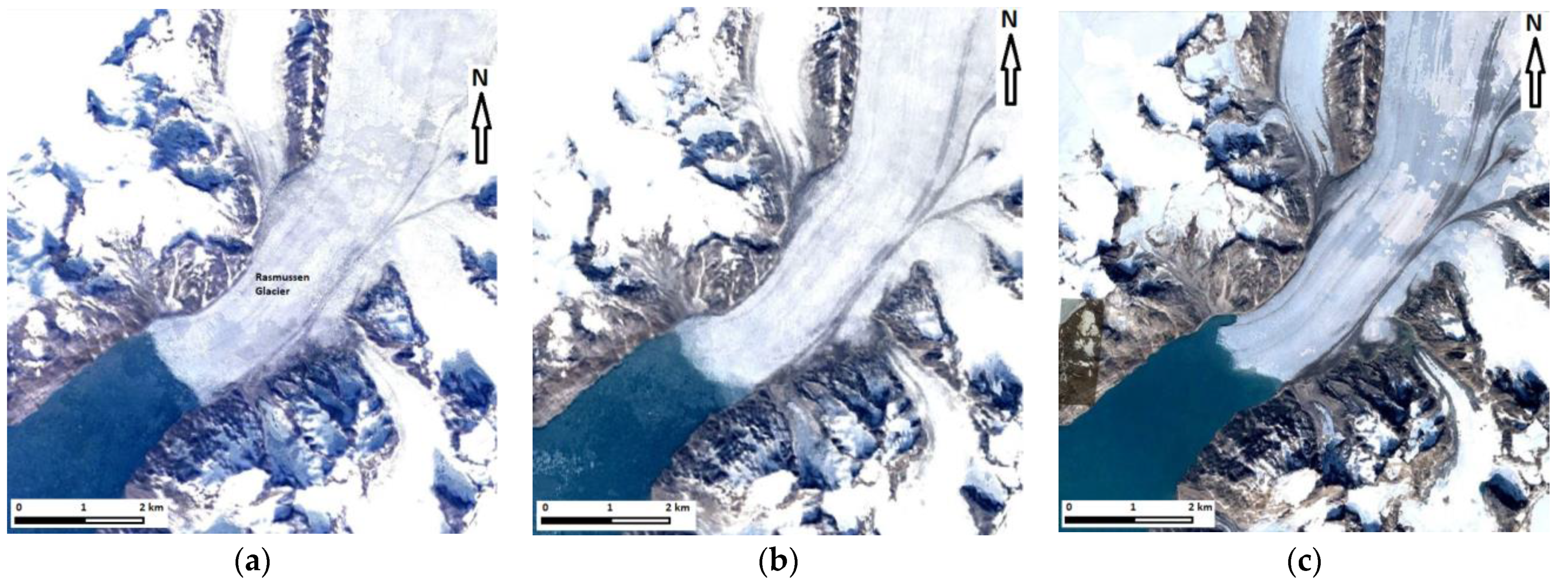
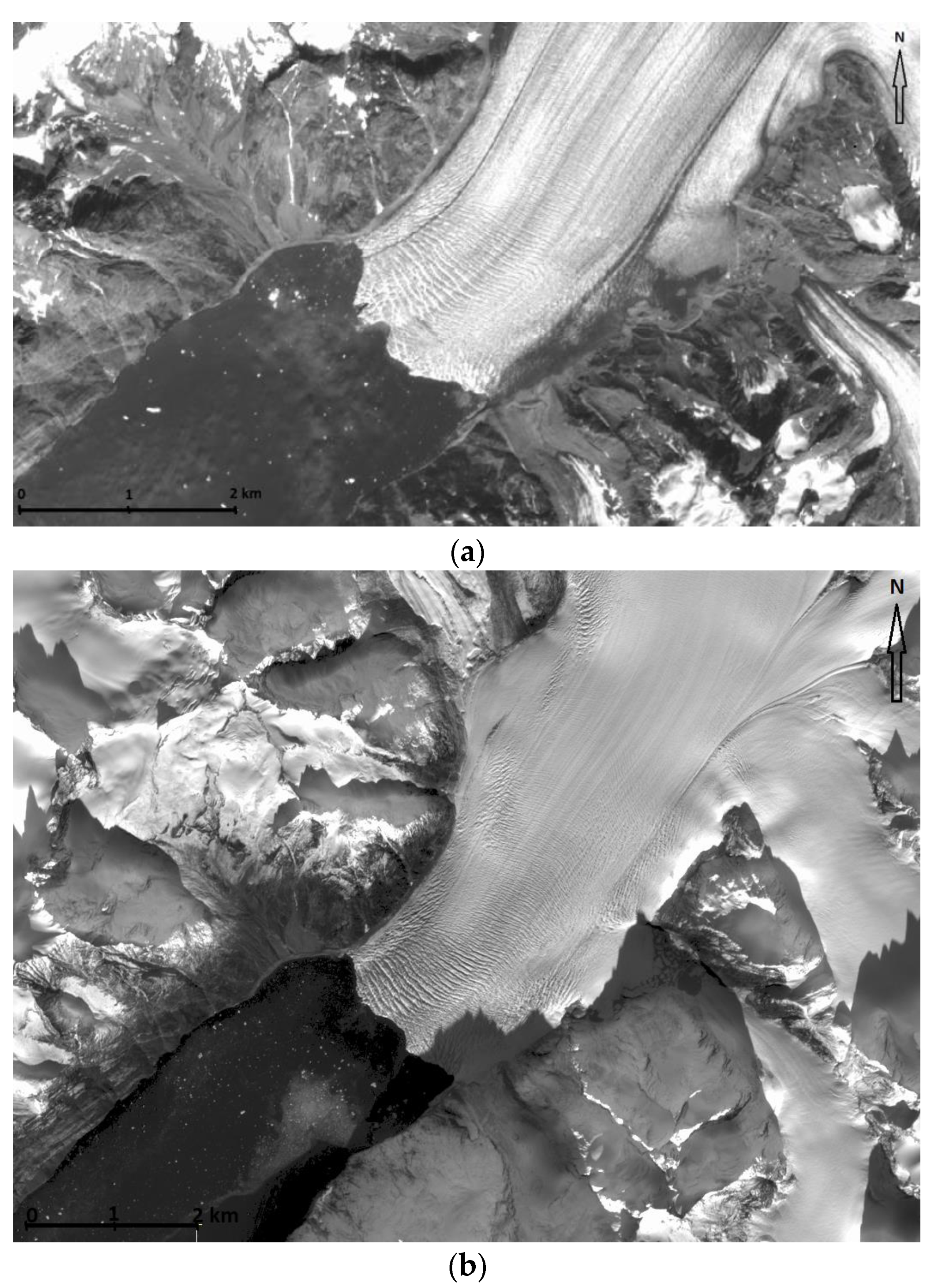

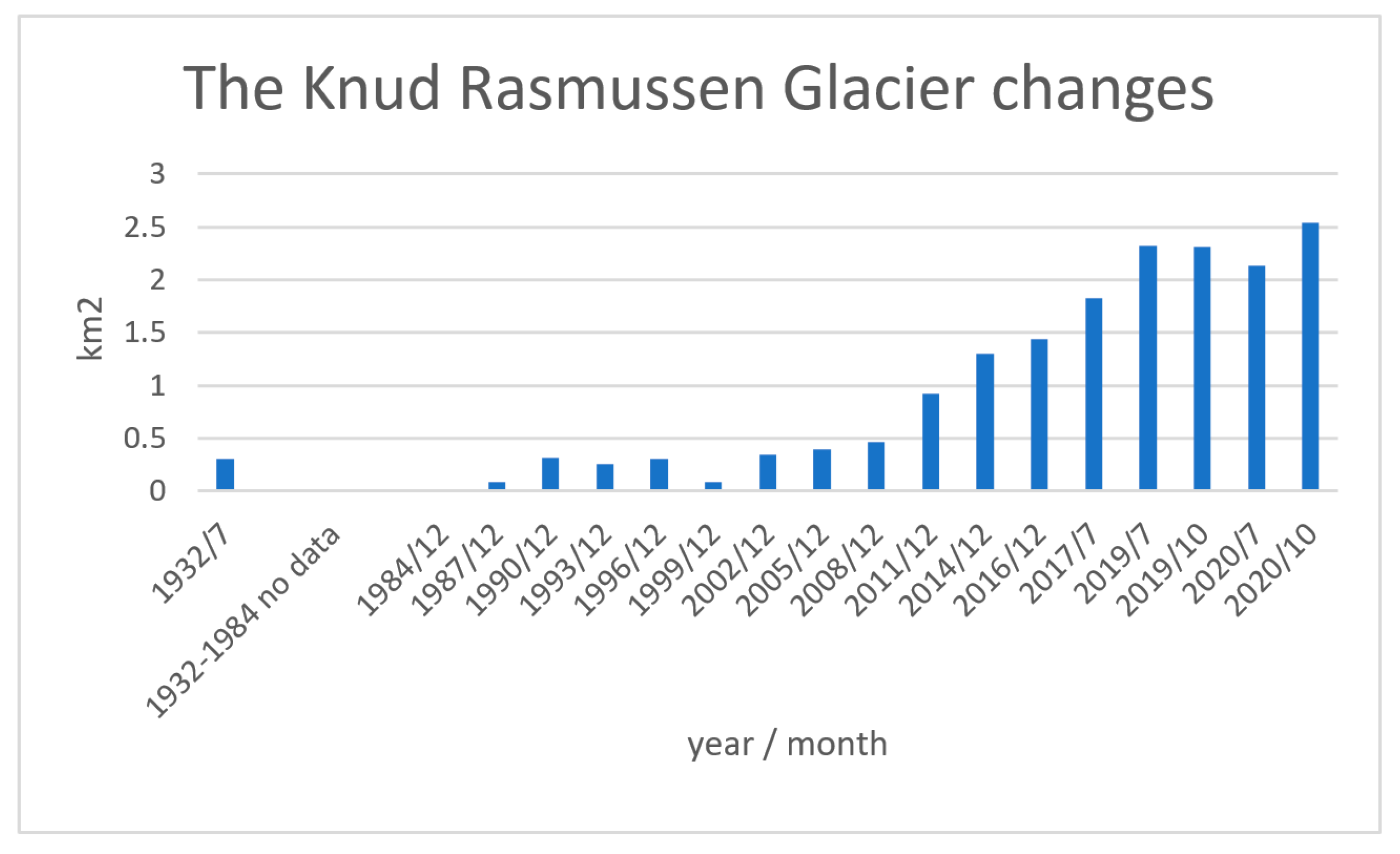
Publisher’s Note: MDPI stays neutral with regard to jurisdictional claims in published maps and institutional affiliations. |
© 2021 by the authors. Licensee MDPI, Basel, Switzerland. This article is an open access article distributed under the terms and conditions of the Creative Commons Attribution (CC BY) license (http://creativecommons.org/licenses/by/4.0/).
Share and Cite
Pavelka, K.; Šedina, J.; Pavelka, K., Jr. Knud Rasmussen Glacier Status Analysis Based on Historical Data and Moving Detection Using RPAS. Appl. Sci. 2021, 11, 754. https://doi.org/10.3390/app11020754
Pavelka K, Šedina J, Pavelka K Jr. Knud Rasmussen Glacier Status Analysis Based on Historical Data and Moving Detection Using RPAS. Applied Sciences. 2021; 11(2):754. https://doi.org/10.3390/app11020754
Chicago/Turabian StylePavelka, Karel, Jaroslav Šedina, and Karel Pavelka, Jr. 2021. "Knud Rasmussen Glacier Status Analysis Based on Historical Data and Moving Detection Using RPAS" Applied Sciences 11, no. 2: 754. https://doi.org/10.3390/app11020754
APA StylePavelka, K., Šedina, J., & Pavelka, K., Jr. (2021). Knud Rasmussen Glacier Status Analysis Based on Historical Data and Moving Detection Using RPAS. Applied Sciences, 11(2), 754. https://doi.org/10.3390/app11020754





